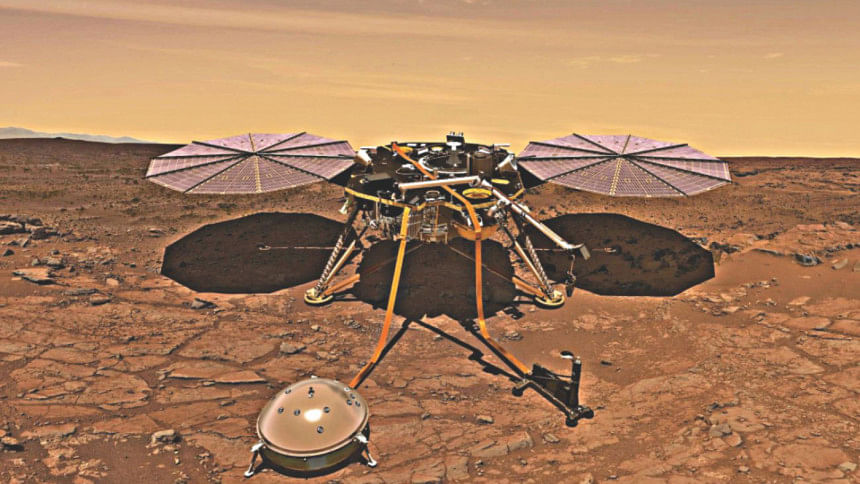InSight blasts off for Mars

Nasa yesterday launched its latest Mars lander, called InSight, designed to perch on the surface and listen for "Marsquakes" ahead of eventual human missions to explore the Red Planet.
"Three, two, one, liftoff!" said a Nasa commentator as the unmanned spacecraft blasted off on a dark, foggy morning atop an Atlas V rocket at 4:05am Pacific time (1105 GMT) from Vandenberg Air Force Base in California, marking NASA's first interplanetary launch from the US west coast.
The $993 million project aims to expand human knowledge of interior conditions on Mars, inform efforts to send explorers there, and reveal how rocky planets like the Earth formed billions of years ago.
"This is a big day. We are going back to Mars," said Nasa administrator Jim Bridenstine after the launch.
About an hour and 40 minutes into the flight, the spaceship separated from the upper stage of the rocket, as planned.
If all goes well during the 301 million mile (485 million kilometer) trip, the lander should settle on the Red Planet on November 26.
InSight is short for Interior Exploration using Seismic Investigations, Geodesy and Heat Transport.
The key instrument on board is a seismometer, called the Seismic Experiment for Interior Structure, made by the French Space Agency. After the lander settles on the Martian surface, a robotic arm is supposed to emerge and place the seismometer directly on the ground.
Called the Heat Flow and Physical Properties Package, it was made by the German Space Agency with the participation of the Polish Space Agency.
The probe will bore down 10 to 16 feet (three to five meters) below the surface, NASA said, 15 times deeper than any previous Mars mission.
Understanding the temperature on Mars is crucial to NASA's efforts to send people there by the 2030's, and how much a human habitat might need to be heated under frigid conditions, said Green.
The temperature at the landing site for InSight is frigid, and expected to range between -148 F and -4 F (-100 Celsius to -20 Celsius).
Daytime summer temperatures near the Martian equator may reach 70 degrees Fahrenheit (20 degrees C), but then plunge by night to -100 F (-73 C).
The solar and battery-powered lander is designed to operate for 26 Earth months, or one year on Mars, a period in which it is expected to pick up as many as 100 quakes.
InSight aims to be the first NASA spacecraft to land on Mars since the Curiosity rover in 2012.

 For all latest news, follow The Daily Star's Google News channel.
For all latest news, follow The Daily Star's Google News channel. 



Comments